This article was co-authored by Pippa Elliott, MRCVS. Dr. Elliott, BVMS, MRCVS is a veterinarian with over 30 years of experience in veterinary surgery and companion animal practice. She graduated from the University of Glasgow in 1987 with a degree in veterinary medicine and surgery. She has worked at the same animal clinic in her hometown for over 20 years.
There are 9 references cited in this article, which can be found at the bottom of the page.
wikiHow marks an article as reader-approved once it receives enough positive feedback. This article received 17 testimonials and 92% of readers who voted found it helpful, earning it our reader-approved status.
This article has been viewed 477,013 times.
Tapeworms are intestinal parasites that can latch onto your pet’s intestinal wall causing damage and stealing vital nutrients. Over time as the worm matures, individual segments of its body containing its eggs, break off and pass out of the body in the stool. Once out of the body, the eggs hatch and new tapeworms enter the world to infect again. If your pet has a tapeworms, you’ll probably see these segments stick to the hair surrounding your pet’s anus. You might also see them in its fecal matter. They look like little pieces of rice. If freshly squeezed, they may even wiggle like worms.[1] Once you’ve spotted them, it’s time to act fast and treat your pet.
Steps
Getting Treatment
-
1Look for common symptoms. In general, signs of tapeworms can be difficult to spot. The most obvious sign is when you spot little segments of the worm - almost like grains of rice - around your pet's anus or in its fecal matter. Sometimes, behavioral clues might tip you off. If your dog seems to be dragging its butt on the carpet more frequently, you may want to check for tapeworms. It is possible that the dog's anus is irritated - hence, why it would rub its rear-end on the floor. Anemia occurs on rare occasions too.[2]
-
2Collect a stool sample. The veterinarian may want to verify the presence of tapeworms before a prescription is given to you. The best way to do this is to take a plastic bag and to collect a specimen. Don’t make physical contact with the worm. Just scoop it up and put it in a bag. In other cases, you might have to pick the worm segment off of your dog’s rear-end. Otherwise, your veterinarian may ask to keep your pet for a couple of hours to collect a specimen for himself.[3]Advertisement
-
3Call your vet. They'll either insist you come in for a check-up, prescribe you a medication over the phone, or direct you to an over-the-counter medication sold at most pets supply stores. There are a variety of medications — most of which use praziquantel — to combat these little wormy parasites.[4] The most common medications are Droncit, Drontal Plus, and Tradewinds Tapeworm Tabs. These can be found at vet clinics and some pet superstores.Your vet will know exactly which treatment will best eliminate tapeworms. Depending on your pet, your pet’s size, and your pet’s age, your vet will take differed medicinal approaches.[5]
- If you purchase a dewormer at a pet supply store, be sure to follow the directions methodically.
- Most treatments are given orally, but there are injections and topical treatments too.
-
4Follow your vet’s instructions closely. All of these medications will have age and size specifications that you’ll need to follow. For example, most medicines cannot be used on young kittens (less than 8 weeks) or kittens under 2.2. lbs.[6]
Administering the Medicine
-
1Have the medicine in hand. Regardless of whether you are using a pill, liquid, or topical treatment, you’ll want to have the medicine ready in hand. If your pet is reluctant to receive any of these treatments, your job will be infinitely harder if you don't have the medicine ready.
-
2Restrain your pet. This can be done in a variety of ways and depending on the size of your pet, you may need another set of hands. Start by cornering in its hind legs. Your pet will most likely try to back out of whatever situation they are in. If they cannot, they’ll be easier to contain. Hold its head with one hand and have the other prepared to administer the medicine.[7]
- If you are using an oral medication, place your pointer finger and thumb on either side of your pet's mouth and tilt its head backwards. This is the most effective way to get your pet’s mouth open to receive the medication.
-
3Apply or insert the medicine. Now that you have your pet restrained, administer the medicine. Apply topical treatments according to the directions — most of the time on the back of your pet's head/neck, so it cannot mess with it once it has been applied. Insert the pill into the cat’s/dog’s mouth.
- For oral medicines, you’ll want to close your pet’s mouth. Hold it closed for 5-10 seconds and rub the outside of its throat gently. This will spark the swallowing process.
- Afterwards, make sure that the oral supplement has been swallowed. Dogs and cats will often spit it right back out.
-
4Reward your pet. Make this a pleasant experience for your furry friend. After all, it isn’t like it wanted to get tapeworms. Give it a treat. Pet your cat or dog profusely. If you do this, the next treatment will go easier, because your pet will associate the experience with tasty treats and love.
Preventing Tapeworms in the Future
-
1Control fleas. Tapeworms must have an intermediate host, the flea, to complete their life-cycle and infest the next victim. Your pet gets tapeworms by swallowing a flea infected with tapeworm larvae or by eating a small mammal, usually a rodent that contains the worm. Flea control involves treatment of your pet, the indoor environment, and the outdoor environment where the pet resides.[8] There are various sprays, foggers, and traps that you can purchase at most pet stores. Or you can have a pesticide professional come by and do it for you.[9]
- If the pet lives in a flea-infested environment, reinfection with tapeworms may occur in as little as two weeks. Because the medication which treats tapeworm infection is so effective, return of the tapeworms is almost always due to reinfection from the environment.[10]
-
2Keep your pet on a preventative prescription plan. Consult your vet for specifics. Some medications, like Sentinel Spectrum, act broadly to protect against fleas, heartworms, hookworms, roundworms, and tapeworms.
-
3Clean up after your dog. Since tapeworms begin their life cycle in your pet’s feces, take care of them from the start. Clean your cat’s litter box. Pick up after your dog outside. Dispose of your pet's waste carefully. Wear gloves. Use a disinfectant whenever possible. Put its waste into a plastic bag and dispose of it. Eventually the air will run out in the bag and the worms will suffocate. It is also just a public safety service. Don't spread your pet's tapeworms to other animals.[11]
-
4Wash your hands after you play with your pets. Regular or anti-bacterial soap will help guard you from tapeworms. You don't want to inadvertently carry the tapeworm with you.[12]
Expert Q&A
-
QuestionCan tapeworm segments infect humans?
 Pippa Elliott, MRCVSDr. Elliott, BVMS, MRCVS is a veterinarian with over 30 years of experience in veterinary surgery and companion animal practice. She graduated from the University of Glasgow in 1987 with a degree in veterinary medicine and surgery. She has worked at the same animal clinic in her hometown for over 20 years.
Pippa Elliott, MRCVSDr. Elliott, BVMS, MRCVS is a veterinarian with over 30 years of experience in veterinary surgery and companion animal practice. She graduated from the University of Glasgow in 1987 with a degree in veterinary medicine and surgery. She has worked at the same animal clinic in her hometown for over 20 years.
Veterinarian Tapeworms are considered a zoonosis (infectious to people) depending on the species. However, the segments themselves are egg packets and not directly infectious. People acquire infection by ingesting an intermediate host (such as infected meat) rather than direct contact.
Tapeworms are considered a zoonosis (infectious to people) depending on the species. However, the segments themselves are egg packets and not directly infectious. People acquire infection by ingesting an intermediate host (such as infected meat) rather than direct contact. -
QuestionI found brown, rice like objects in my bed. Could these be dried up tapeworms?
 Pippa Elliott, MRCVSDr. Elliott, BVMS, MRCVS is a veterinarian with over 30 years of experience in veterinary surgery and companion animal practice. She graduated from the University of Glasgow in 1987 with a degree in veterinary medicine and surgery. She has worked at the same animal clinic in her hometown for over 20 years.
Pippa Elliott, MRCVSDr. Elliott, BVMS, MRCVS is a veterinarian with over 30 years of experience in veterinary surgery and companion animal practice. She graduated from the University of Glasgow in 1987 with a degree in veterinary medicine and surgery. She has worked at the same animal clinic in her hometown for over 20 years.
Veterinarian You are describing tapeworm egg packets. These migrate out of the pet's anus and transfer anywhere the pet sits. The egg packets then dry up and are eaten by the intermediate host, where the outer shell dissolves to release the eggs.
You are describing tapeworm egg packets. These migrate out of the pet's anus and transfer anywhere the pet sits. The egg packets then dry up and are eaten by the intermediate host, where the outer shell dissolves to release the eggs. -
QuestionI found a parasite outside that has a flat head and flat body. We have two dogs, one who lives inside and a stray who lives outside. What do I do to get rid of this parasite?
 Pippa Elliott, MRCVSDr. Elliott, BVMS, MRCVS is a veterinarian with over 30 years of experience in veterinary surgery and companion animal practice. She graduated from the University of Glasgow in 1987 with a degree in veterinary medicine and surgery. She has worked at the same animal clinic in her hometown for over 20 years.
Pippa Elliott, MRCVSDr. Elliott, BVMS, MRCVS is a veterinarian with over 30 years of experience in veterinary surgery and companion animal practice. She graduated from the University of Glasgow in 1987 with a degree in veterinary medicine and surgery. She has worked at the same animal clinic in her hometown for over 20 years.
Veterinarian You need to treat both dogs with a medication that is effective against tapeworms. Look for a treatment containing praziquantel (usually available with a prescription via your vet). Also, fleas contain tapeworm eggs, so treat both dogs with a good product that kills fleas. If the stray scavenges, he will reinfect himself quickly, and you will need to administer a tapewormer every month.
You need to treat both dogs with a medication that is effective against tapeworms. Look for a treatment containing praziquantel (usually available with a prescription via your vet). Also, fleas contain tapeworm eggs, so treat both dogs with a good product that kills fleas. If the stray scavenges, he will reinfect himself quickly, and you will need to administer a tapewormer every month.
Warnings
- Tapeworms can infect people, although infection is not common or likely. A flea must be ingested for humans to become infected with the most common tapeworm of dogs. Most reported cases have involved children. The most effective way to prevent human infection is through aggressive, thorough flea control. The risk for infection with this tapeworm in humans is quite small but does exist.[13]⧼thumbs_response⧽
References
- ↑ http://www.cdc.gov/parasites/dipylidium/faqs.html
- ↑ http://www.vcahospitals.com/main/pet-health-information/article/animal-health/tapeworm-infection-in-dogs/949
- ↑ Merck Veterinary Manual. C.M. Cahn. S. Line. 9th Ed. John Wiley and Sons, 2005.
- ↑ https://www.akc.org/expert-advice/health/tapeworms-in-dogs-symptoms-treatment-and-prevention/
- ↑ Merck Veterinary Manual. C.M. Cahn. S. Line. 9th Ed. John Wiley and Sons, 2005.
- ↑ Merck Veterinary Manual. C.M. Cahn. S. Line. 9th Ed. John Wiley and Sons, 2005.
- ↑ https://www.akc.org/expert-advice/health/how-to-give-a-dog-a-pill/
- ↑ https://www.cdc.gov/fleas/avoid/on_pets.html
- ↑ Small Animal Care and Management. Dean Marvin Warren. Cengage Learning. 2002
About This Article
To get rid of tapeworms in your pet, start by calling your vet and explaining your pet’s symptoms so they can tell you how to proceed. Your vet may recommend a prescription or over-the-counter medication, such as Droncit or Drontal Plus, which you can find at your local pet store. When it’s time to give your pet its medicine, hold its head with one hand and position its backside against a corner of the room so that it can’t back away. Then, place the pill in your pet’s mouth and tilt its head backwards so that it swallows the medicine and doesn’t spit it out. For advice from our Veterinary reviewer on how to keep your pet from spreading tapeworms to other animals, read on!
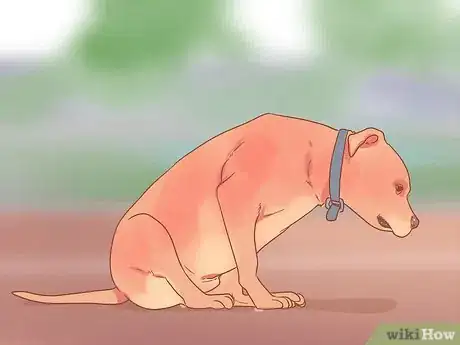

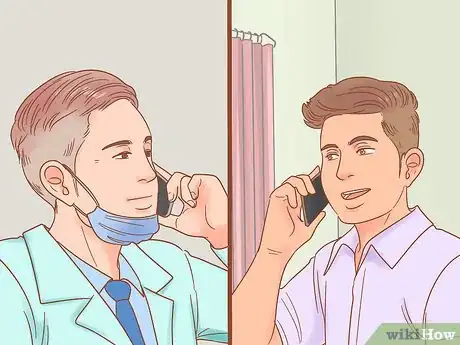
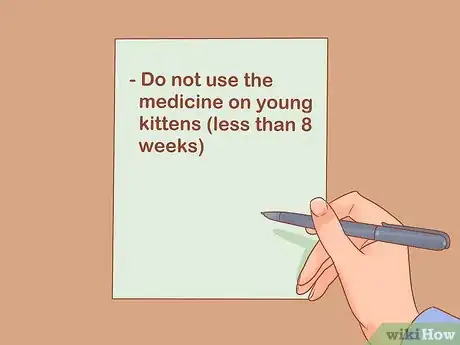
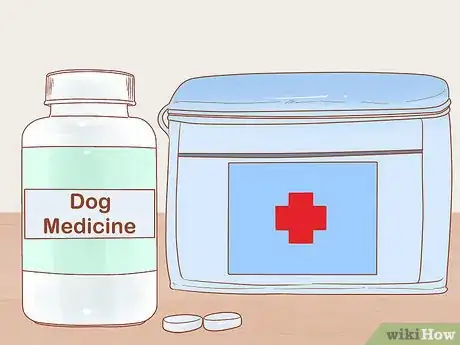
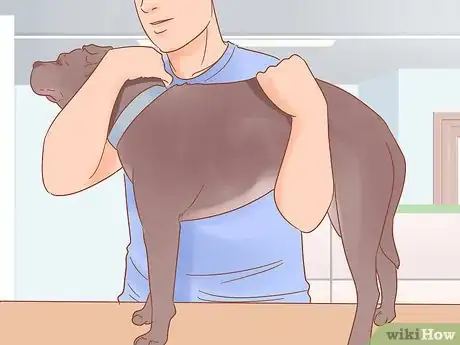
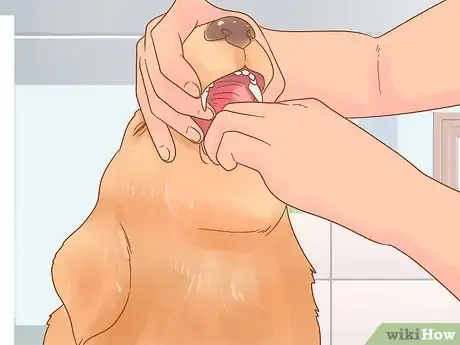
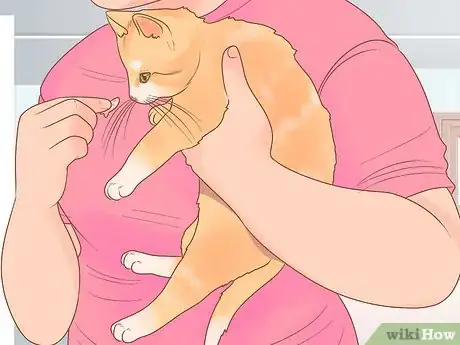
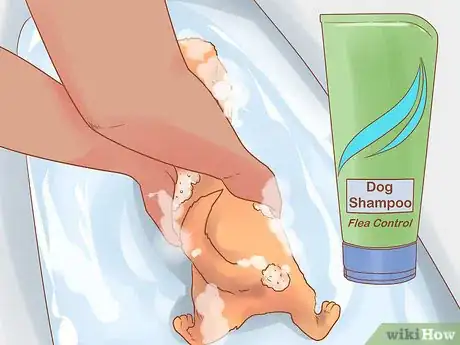
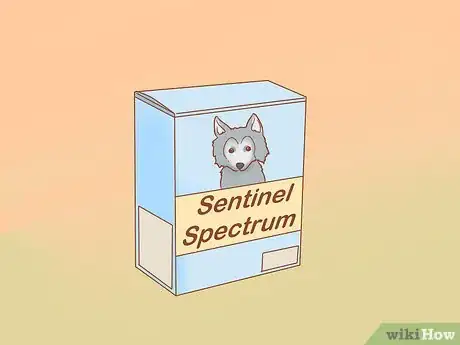
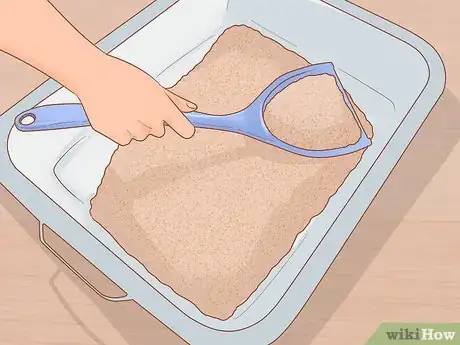
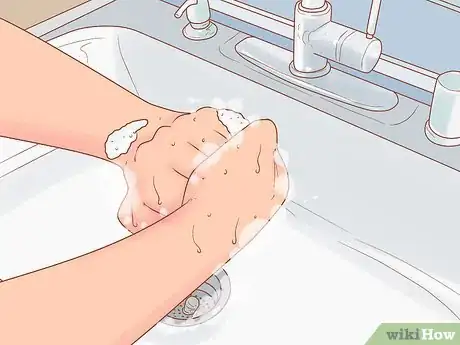
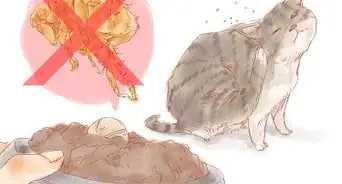

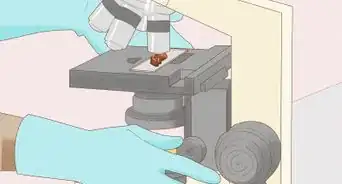
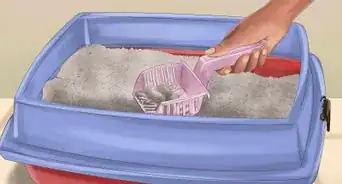
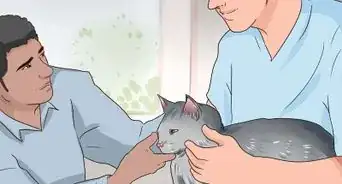
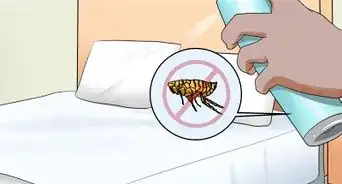
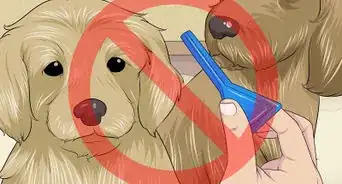




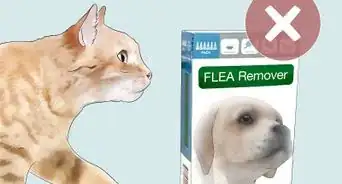
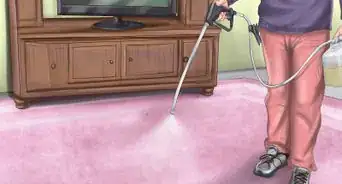
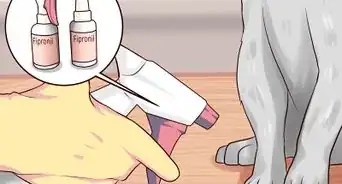










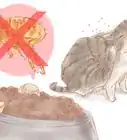

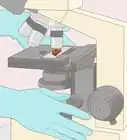
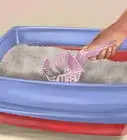




































Medical Disclaimer
The content of this article is not intended to be a substitute for professional medical advice, examination, diagnosis, or treatment. You should always contact your doctor or other qualified healthcare professional before starting, changing, or stopping any kind of health treatment.
Read More...